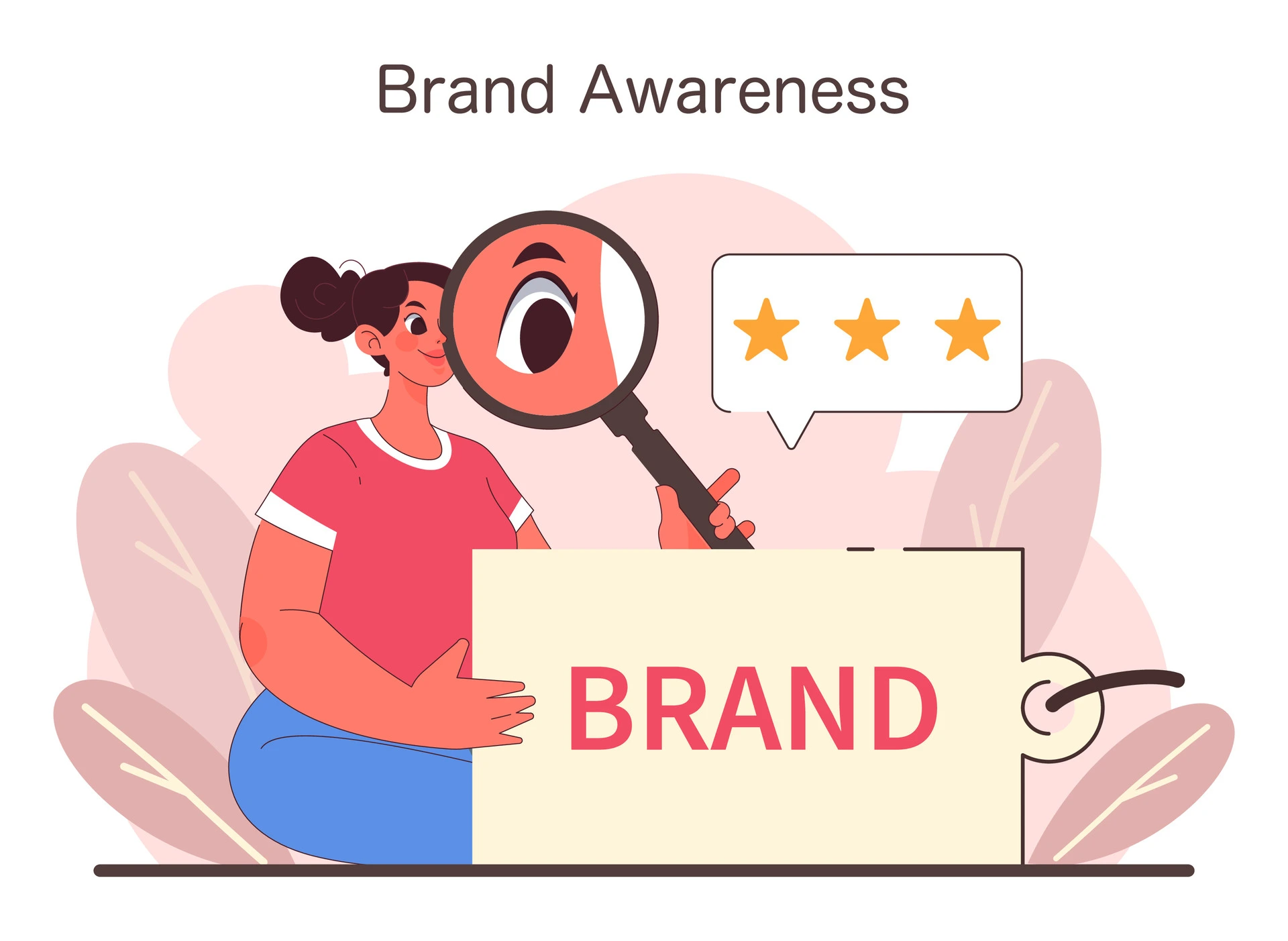A well-defined brand strategy is essential for establishing a strong foundation for your business. It serves as a roadmap that guides your marketing efforts and maintains consistency in all customer interactions. Beyond outlining your brand’s identity, it communicates your values, mission, and unique strengths, helping customers recognize what differentiates you from competitors. With a robust strategy in place, businesses can strengthen connections with their audience, build trust, and foster brand loyalty for long-term growth and success.
What is Brand Strategy?
A brand strategy is a detailed plan that outlines how a business will develop and position its brand to achieve specific goals. This strategy involves defining the brand’s mission, values, target audience, and unique selling points to establish a clear identity. A strong brand strategy ensures consistency across all marketing channels, including messaging and visuals, helping consumers easily recognize and connect with the brand. It also aligns with business objectives, fostering trust, loyalty, and emotional connections with customers. Ultimately, an effective brand strategy differentiates a brand from its competitors and serves as a roadmap for sustainable growth and market presence.
Why a Brand Strategy Is Crucial for Business Growth
A clear brand strategy is vital for fostering business growth through stronger customer connections, resulting in increased loyalty. Consistent messaging and visual elements enhance brand recognition, making it easier for consumers to identify and remember your brand. By aligning the brand strategy with business objectives, you create a unified approach that promotes long-term success. Additionally, a well-defined strategy builds credibility and trust, which are essential for attracting new customers and retaining current ones. By enhancing customer loyalty, recognition, and trust, an effective brand strategy lays a strong foundation for sustainable growth and competitiveness in the market.
How a Strong Brand Strategy Sets You Apart in the Market
- Differentiation: A robust brand strategy emphasizes your business’s unique qualities, helping you stand out in a competitive market.
- Target Audience Focus: It enables you to customize your messaging to meet the specific needs and desires of your ideal customers.
- Consistent Communication: A clearly defined strategy ensures that your brand’s voice, tone, and visuals remain consistent across all channels, providing a cohesive experience for your audience.
- Adaptability: As market trends change, a strong brand strategy allows you the flexibility to adapt while remaining aligned with your core values.
Core Components of a Successful Brand Strategy
Creating a successful brand strategy requires several key components that collaborate to form a cohesive and impactful brand identity. Grasping these core elements is vital for developing a brand that resonates with your audience and fosters long-term success.
Defining Your Brand’s Mission and Values
Purpose-Driven Mission: Your brand’s mission goes beyond profit; it encapsulates the reason your business exists. It articulates your goals and outlines how you plan to create a positive impact in your industry or community.
Core Values: Values serve as the foundational principles that guide your brand’s actions and decisions. They represent what your business stands for and foster trust with your audience by highlighting shared beliefs.
Identifying Your Target Audience
- Understanding Customer Needs: Identifying your target audience involves researching and understanding the specific needs, preferences, and challenges of your ideal customers.
- Customer Segmentation: Breaking down your audience into distinct groups based on demographics, interests, and behaviors helps tailor your messaging to address each segment’s unique needs.
- Building Customer Personas: Creating detailed customer personas allows you to visualize your ideal customers and craft personalized experiences that resonate with them.
Defining Your Brand’s Mission and Values
Purpose-Driven Mission: Your brand’s mission goes beyond profit; it represents the fundamental reason your business exists. It outlines your goals and the impact you strive to make in your industry or community.
Core Values: Core values are the principles that guide your brand’s actions and decisions. They embody what your business stands for and foster trust with your audience by demonstrating shared beliefs.
Identifying Your Target Audience
- Understanding Customer Needs: Identifying your target audience requires thorough research to comprehend the specific needs, preferences, and challenges of your ideal customers.
- Customer Segmentation: Dividing your audience into distinct groups based on demographics, interests, and behaviors enables you to tailor your messaging to meet the unique needs of each segment.
- Building Customer Personas: Developing detailed customer personas helps you visualize your ideal customers and create personalized experiences that truly resonate with them.
Differentiating Through Brand Positioning
- Unique Value Proposition: Your brand positioning should highlight what makes your product or service different and why customers should choose you over competitors.
- Market Analysis: Understanding the competitive landscape helps you identify gaps and opportunities where your brand can stand out.
- Consistent Messaging: Clear and consistent messaging reinforces your brand’s position in the market and strengthens its identity in the minds of your audience.
Understanding Brand Perception and Customer Loyalty

Brand perception and customer loyalty are vital for the long-term success of your brand. Understanding how your audience views your brand and fostering customer loyalty can greatly influence your business growth and market position.
How Your Audience Views Your Brand (Brand Perception)
- Creating a Positive Image: Brand perception reflects how customers think and feel about your brand, shaped by their experiences and interactions. When customers have a positive view, it can foster greater trust and loyalty.
- Maintaining Brand Reputation: To effectively manage your brand’s reputation, it’s essential to consistently deliver on your promises and communicate transparently. These practices help build credibility and trustworthiness.
- Embracing Feedback and Adapting: Actively seeking customer feedback and using it to improve your products or services ensures that your brand aligns with customer expectations. This approach not only enhances your offerings but also reinforces your brand’s identity.
The Role of Customer Loyalty in Sustaining Your Brand’s Success
- Repeat Business: When customers are loyal to your brand, they’re more likely to come back for more and recommend you to their friends. This kind of loyalty can really boost your business growth over time.
- Lower Marketing Costs: Bringing in new customers can be pricey, but keeping your existing ones is much more affordable. Plus, loyal customers often spend more in the long run.
- Building Brand Advocates: Happy, loyal customers can turn into your biggest fans. They’ll share their positive experiences through word-of-mouth, leave glowing reviews, and promote your brand on social media.
- Emotional Connection: Loyalty often stems from a strong emotional connection with your brand. This goes beyond just being satisfied with a product; it’s about building meaningful relationships that last.
Strategies to Elevate Your Brand in a Competitive Market
Standing out requires strategic efforts that go beyond basic marketing tactics. Elevating your brand’s presence involves creating a memorable identity that resonates with your audience while staying ahead of market trends.
- Consistent Branding: Keep your brand’s visual identity, messaging, and tone uniform across all platforms. This consistency helps your audience recognize and trust your brand more easily.
- Utilize Multiple Channels: Expand your brand’s reach by leveraging various marketing channels like social media, content marketing, email campaigns, and paid advertising. A multi-channel approach boosts your visibility and encourages engagement.
Leveraging Storytelling to Connect with Your Audience
- Authentic Brand Stories: Share compelling narratives that reflect your brand’s journey, mission, and core values. Genuine storytelling creates an emotional bond with your audience, making your brand more relatable and memorable.
- Customer-Centric Narratives: Focus on customer success stories and testimonials to showcase how your products or services have made a positive impact. This strategy builds trust and fosters a sense of community around your brand.
- Visual Storytelling: Use visuals like videos, infographics, and images to enrich your brand’s narrative. This approach makes your story more engaging and easier for your audience to grasp.
Staying Relevant with Evolving Market Trends
- Market Research: Regularly conduct market research to stay updated on industry trends and consumer preferences. This helps you adapt your brand strategy to meet changing demands.
- Innovation and Adaptability: Embrace innovation by continuously evolving your products, services, and marketing techniques to align with the latest trends.
- Engage with Your Audience: Actively engage with your audience through social media and online communities to understand their needs and gain insights into emerging trends.
Measuring the Effectiveness of Your Brand Strategy
To ensure your brand strategy achieves the desired outcomes, measuring its effectiveness through specific metrics is crucial. By tracking performance, you can pinpoint strengths and identify areas for improvement, enabling you to refine your approach for optimal impact.
Key Performance Indicators (KPIs) for Tracking Brand Success
- Brand Awareness: Assess how well your target audience recognizes and remembers your brand. Look at metrics like website traffic, social media reach, and search engine rankings to gauge awareness.
- Customer Engagement: Measure how actively your audience interacts with your brand across different channels. This includes social media interactions, email open rates, and content shares, which can reveal the strength of your connection with them.
- Customer Loyalty and Retention: Monitor key metrics like repeat purchase rates, customer lifetime value, and Net Promoter Score (NPS) to evaluate customer loyalty and satisfaction. These insights help you understand how well you retain your customers.
- Conversion Rate: Analyze the percentage of prospects who take desired actions, such as making a purchase or subscribing to a newsletter. This will help you determine how effectively your brand converts leads into customers.
The Importance of Brand Audits and Periodic Reviews
- Evaluating Brand Consistency: Regular brand audits help ensure that your brand messaging, visuals, and overall identity remain consistent across all platforms and communications.
- Identifying Gaps and Opportunities: A thorough review of your brand strategy can reveal areas where your brand is underperforming or where there are opportunities for growth and innovation.
- Staying Competitive: Periodic reviews allow you to adapt to changing market dynamics and consumer preferences, keeping your brand relevant and competitive.
- Refining Your Strategy: Continuous assessment helps you refine your brand strategy based on what’s working and what needs improvement, ensuring sustained brand growth and success.
How Sponsoring of HT City Unwind Can Help your Brand Strategy
Sponsoring events like HT City Unwind can be a powerful tool for enhancing your brand strategy. It not only boosts your brand’s visibility but also allows you to engage directly with your target audience in a meaningful way.
As one of the leading events in the lifestyle and entertainment space, HT City Unwind offers significant exposure to brands looking to establish a strong presence in the market. It’s an ideal opportunity to showcase your products or services to a highly engaged audience.
Benefits of Sponsorship
- Enhanced Brand Visibility: Sponsoring HT City Unwind provides your brand with extensive visibility through event marketing, social media promotions, and on-site branding. It puts your brand in front of thousands of attendees who align with your target audience.
- Direct Audience Engagement: The event offers a unique opportunity for face-to-face interaction with potential customers, allowing you to build a personal connection and gain valuable insights into their preferences and needs.
- Positioning as an Industry Leader: Aligning your brand with a prestigious event like HT City Unwind positions your company as a leader in the industry. It showcases your commitment to creating memorable experiences and adds credibility to your brand.
- Networking Opportunities: Sponsorship also opens doors to networking with other businesses, influencers, and industry leaders, expanding your reach and fostering potential collaborations.
Frequently Asked Questions
Why is a brand strategy essential for long-term business success?
A brand strategy is essential because it provides a clear direction for all marketing efforts, ensuring consistency and alignment with business goals. It helps businesses communicate their mission, values, and unique strengths, creating meaningful connections with their audience. A well-defined strategy builds customer trust, loyalty, and recognition, which are crucial for sustainable growth. By differentiating a brand from competitors, businesses can establish a strong market presence and maintain relevance in a changing environment, ultimately fostering long-term success.
How does brand strategy impact customer trust and loyalty?
Brand strategy builds trust by delivering consistent messaging and maintaining a reliable brand image across all touchpoints. Customers are more likely to trust brands that align with their values and consistently meet their expectations. A clear strategy also fosters loyalty by creating emotional connections with customers through personalized experiences. This bond encourages repeat business and turns satisfied customers into advocates who promote the brand to others. Over time, trust and loyalty become vital for a business to maintain a strong relationship with its audience and ensure customer retention.
What are the key elements of an effective brand strategy?
An effective brand strategy includes several core elements: a defined mission and set of values, a clear understanding of the target audience, and a unique positioning in the market. Additionally, it ensures consistency in brand messaging and visuals across all marketing channels. Another crucial element is adaptability businesses need to evolve their strategies based on market trends and customer feedback while staying aligned with their core identity. Together, these elements create a cohesive brand that resonates with customers and drives sustainable growth.
How does brand strategy differentiate a business from its competitors?
Brand strategy helps businesses stand out by emphasizing their unique selling points and value propositions. By understanding their target audience, businesses can tailor their messaging to meet specific needs, which strengthens brand relevance. Differentiation is further enhanced through consistent communication, visual identity, and storytelling that reflect the brand’s mission and values. This distinctiveness positions the brand as a preferred choice in a crowded market, giving it a competitive edge and fostering stronger customer connections.
Ready to take your brand to the next level? Connect with us today to explore how HT Media can amplify your presence across our diverse portfolio of 25+ brands and properties. Let's turn your brand vision into reality!


















Comment